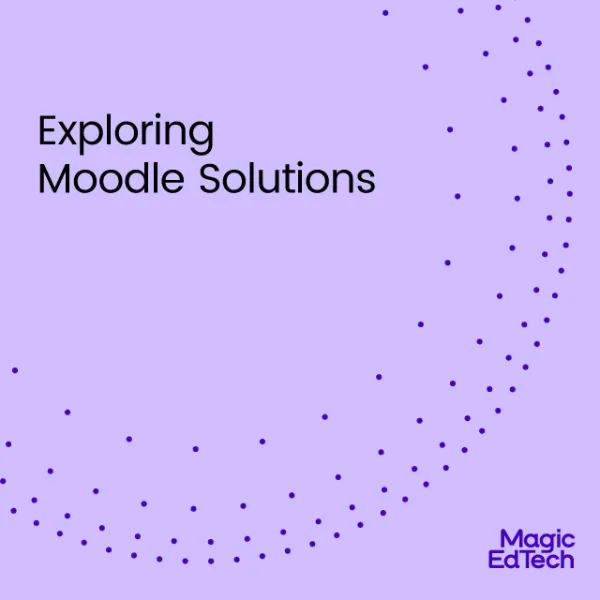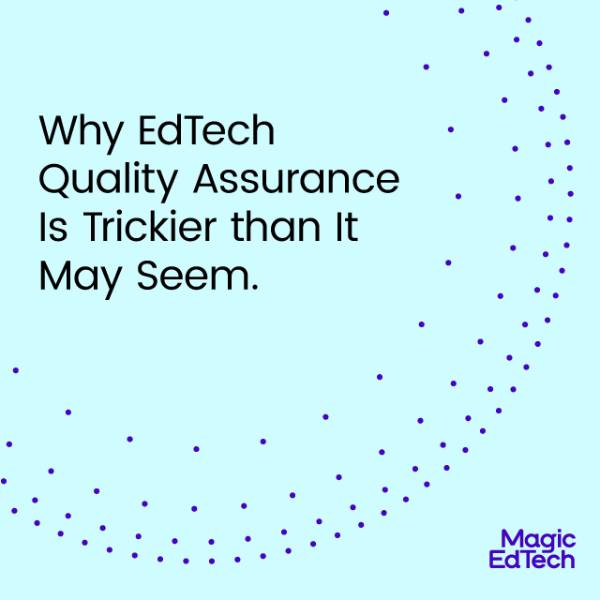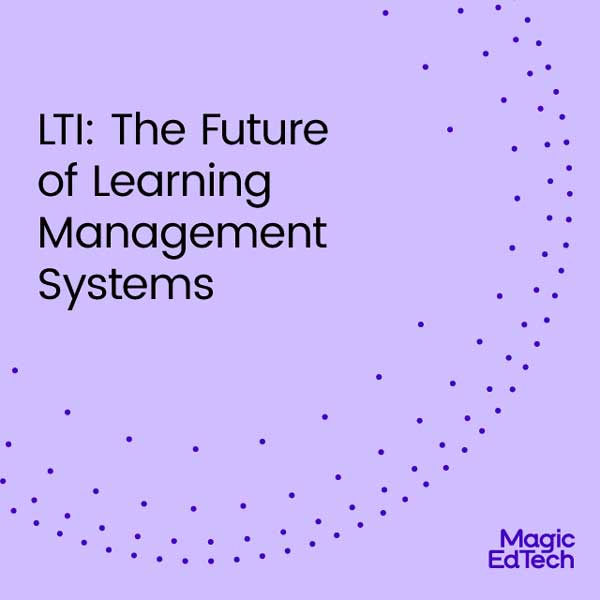EdTech 2.0: 7 Path-Breaking Technologies for Future EdTech Products
- 28 June, 2023
- Reading Time: 5 mins
In today’s hyper-competitive environment, educational product companies must plan for the future when creating educational technology (EdTech) products.
This blog aims to help product owners and decision-makers at education technology solution companies improve accessibility in EdTech products and align them with their long-term business goals. Using these strategies and practices, you can create EdTech solutions that are efficient, competitive, and ready for the future.
So, let’s start by learning about the essential things that will shape the future of EdTech and how to connect them with business goals.
To understand why it’s crucial to think about the future of EdTech, we need to look at the challenges we face right now. The EdTech industry is currently experiencing a funding slowdown, resulting in limited financial resources for EdTech projects. In addition, the collapse of Silicon Valley Bank (SVB) – one of the biggest bank failures in the United States – only added to the growing financial instability. On top of that, we now have artificial intelligence (AI) that can increase accessibility in digital education but is not easy to integrate.
However, if you know the challenges in creating and promoting EdTech products, you can develop strategies to overcome them. Let’s take a look at the challenges in the EdTech world today.
- Limited Funding: The scarcity of funding hampers EdTech development, affecting effectiveness.
- Emphasis on Outcomes: EdTech products face increasing demands for measurable results and evidence of effective learning outcomes.
- Lack of Confidence: Some educators, students, and parents lack confidence in the reliability and effectiveness of EdTech solutions.
- AI Integration: Integrating AI in education poses challenges, including expertise, data privacy, ethics, and equitable use concerns.
- Accessibility and Inclusion: Overcoming barriers like connectivity, device availability, and inclusive design for diverse learners is challenging.
- Teacher Training: Providing adequate training and support for educators in using EdTech tools is crucial for success.
Addressing these challenges requires a proactive and forward-thinking approach from EdTech companies, educational institutions, policymakers, and other stakeholders. By recognizing and overcoming these obstacles, the potential of EdTech to transform education can be realized.
The Future is Now: Embracing the Transformative Potential of Emerging Technologies
To align EdTech products with future business goals, it is essential to understand the technologies that will shape the industry. Here are some new technologies you might want to consider on this journey.
1. Emotion Recognition in E-Learning
Emotion recognition in online learning products uses advanced AI algorithms to analyze learners’ facial expressions, voice tone, and behavioral cues. By understanding learners’ emotions during their learning experiences, these products can enhance engagement, personalize learning, and improve learner satisfaction.
For example, if a learner shows signs of frustration or confusion, the technology can adjust the content or provide additional support to help them better understand the material. It adds a human-like element to the learning process, making it more interactive and responsive to learners’ needs.
2. Neuroadaptive Technology
EdTech products can utilize neurotechnology in classrooms, which involves using brain-computer interfaces and neurofeedback to adapt learning experiences based on the cognitive state of individual learners. This approach allows the product to monitor the learner’s brain activity and adjust the content or pace of the learning accordingly.
For instance, if a learner’s brain activity indicates they are becoming tired or losing focus, the technology can modify the learning environment to re-engage the learner and optimize their learning outcomes.
3. Multimodal Learning Analytics
By incorporating multimodal learning analytics, edTech products can gather data from various sources, such as eye-tracking, speech recognition, and gesture analysis. This comprehensive approach provides valuable insights into learners’ behaviors, preferences, and progress.
For example, eye-tracking can reveal where learners focus their attention, while speech recognition can capture their verbal responses. By analyzing this data, EdTech products can better understand how learners interact with the content and identify areas for improvement.
4. Learning Analytics for Meta-Cognition
Learning analytics goes beyond monitoring learners’ progress and can also be used to promote metacognitive skills. Metacognition refers to thinking about one’s thinking and learning processes. EdTech products can analyze data collected during the learning journey and provide feedback to help learners develop self-awareness, reflection, and critical thinking abilities.
For example, the product might prompt learners to reflect on their problem-solving strategies or ask questions encouraging them to evaluate their understanding. By fostering metacognitive skills, EdTech products empower learners to become more independent and strategic.
5. Blockchain in Education
Exploring the potential of blockchain technology in education can revolutionize how credentials are verified and secured. Blockchain is a decentralized and tamper-proof digital ledger that ensures transparency and immutability of records.
In education, blockchain can securely store and verify educational credentials, such as degrees or certificates, eliminating the need for traditional paper-based documentation.
6. Adaptive Learning in Education
EdTech products can employ adaptive content creation techniques for diverse learning styles and preferences. These techniques include modular components, flexible templates, or AI-powered content generation. Personalized adaptive learning products can provide engaging learning experiences by offering adaptable content.
For instance, learners can choose different paths through the content based on their interests or learning needs. AI can also help generate content tailored to the individual learner, considering their strengths, weaknesses, and learning preferences.
7. Social and Emotional Learning (SEL) Integration
EdTech products can be vital in integrating social and emotional learning (SEL) practices into the learning journey. SEL focuses on developing essential skills such as self-awareness, empathy, communication, and relationship-building.
Aligning EdTech Products with Business Goals
To ensure EdTech products are aligned with long-term business goals, consider the following steps:
- Prioritize Improved Student Outcomes: Design EdTech products that prioritize improving student outcomes, such as academic performance, engagement, and satisfaction. Align product features and strategies to enhance these key metrics.
- Focus on Learner Efficacy: Build EdTech products that empower learners and improve their self-efficacy. Learners can build confidence and achieve better results by providing personalized learning experiences and tailored feedback.
- Embrace Personalized Learning: Develop EdTech products that cater to individual learner needs and preferences. Leverage adaptive technologies and data-driven insights to deliver customized learning journeys.
- Drive Operational Efficiency: Identity areas where EdTech solutions can streamline administrative tasks, reduce costs, and optimize workflows within educational institutions. Highlight the potential time and resource savings for long-term business benefits.
Final Thoughts
When developing EdTech products, always keep the learning outcome as the end goal. Ensure content and technology are accessible to diverse learners, fostering inclusivity. Leave room for continuous iteration and improvement, adapting to changing educational needs.
Want to learn more about Magic EdTech and our track record of developing business-aligned EdTech products? Then let’s talk! Contact us today to start collaborating in creating future-ready EdTech solutions that unlock the full potential of education.





